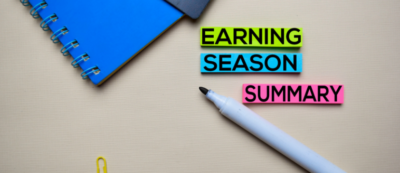If your goal is to look out for your loved ones, consider tackling these estate-planning additional jobs.
Estate planning is the easiest financial planning to-do to put off. It’s certainly not fun to ponder your own mortality, and yet that’s the very nature of estate planning. Lawyers are often involved, so it can be hard to get it done on the cheap. And while most financial planning jobs provide at least some payoff during your lifetime, estate planning isn’t as much for you as it is for your loved ones.
It’s no wonder that so many individuals put off creating or updating on an estate plan. But anecdotally, at least, the pandemic seems to be lighting a fire under some people to get serious about creating or updating their estate plans once and for all.
Making sure you have the key estate planning documents in place is important; that means a will, powers of attorney for healthcare and financial matters, and guardianships for minor children, first and foremost. Trusts may also make sense in certain situations. But there are other add-ons that you can think about in the context of your estate plan, especially if your goal is to make life as easy for your loved ones as possible and to ensure that your wishes are carried out after your death. In contrast with a traditional estate plan, you can craft at least some of these documents on your own, without the aid of a solicitor.
- A Financial Overview
In my parents’ later years, I was intimately involved and eventually in charge of their finances, managing their investments, paying their bills from their bank account, and so on. When they eventually passed away, I didn’t have to hunt around for key documents or climb a learning curve about their finances.
But many of us don’t have or want that kind of backup in place, which is why I think it can be helpful to create a financial overview and master directory for your loved ones. (These documents can also come in handy if you’re the main financial decision-maker in your household and your spouse doesn’t pay too much attention.)
A financial overview and master directory go hand in hand.
I recently created such a financial overview for our household and included the following headings:
- Our estate plan (in very broad outlines: where to find the documents and who the key agents are – POAs and executors).
- Our key financial assets (no dollar amounts or account numbers; just where we hold the accounts and who owns them).
- Our insurance coverage (property/casualty, health, life).
- Our house (property ID number, whether there’s a mortgage).
- Cars (VIN numbers, whether there are car payments).
- Regular household bills that we pay.
- A Master Directory
Think of a master directory as a detailed version of your financial overview. Whereas the financial overview is a Microsoft Word document, this is the Excel version. For example, your financial overview might say, “We are each members of the Jill and John Self Managed Superannuation Fund.” But the master directory would include the actual account numbers for those accounts, the URLs, and the names of any individuals you deal with at those institutions. Because the master directory includes sensitive information, it’s crucial to encrypt it or, if it’s a physical document, to keep it under lock and key.
- A Plan for Your Personal Property
Most wills will state that any tangible personal property, like furniture, should be sold and the proceeds added to your estate. But if you have sentimental or valuable items that you’d like to earmark for specific individuals, such as jewellery, artwork, or special home items, you can also create a memorandum of tangible personal property that specifies who you would like to inherit those items. For your own sanity, don’t go overboard in earmarking every little thing for specific individuals; focus on those items you treasure that will also have meaning for the recipients. I found that creating such a memorandum–and matching my favourite possessions to the loved ones in my life who I thought would appreciate them the most–to be one of the most enjoyable and cathartic aspects of the whole planning process. In addition, because the memorandum isn’t technically part of your will, you can update it as you obtain or shed possessions (or loved ones!). Such a memorandum is legally binding in most states, as long as it’s mentioned in your will. But even if the memorandum isn’t legally binding, it’s probably still worth doing and assuming that your loved ones will honour it.
- A Plan for Your Pets
If you’re an animal lover, you know that pets aren’t possessions; they’re part of the family. Thus, more and more estate plans include provisions for pets. There are a few ways to incorporate pets into an estate plan, and they’re a gradation. The gold standard, albeit one that entails costs to set up, is a pet trust. Through such a trust, you detail which pets are covered, who you’d like to care for them and how, and leave an amount of money to cover the pet’s ongoing care. Alternatively, you can use a will to specify a caretaker for your pet and leave additional assets to that person to care for the pet; the downside of this arrangement is that the person who inherits those assets isn’t legally bound to use the money for the pet’s care. At a minimum, develop at least a verbally communicated plan for caretaking for your pet if you’re unable to do so.
- A Digital Estate Plan
Even people who think they’ve ticked off all of the usual boxes on their estate-planning to-do lists may have overlooked an increasingly important component of the process: ensuring the proper management and orderly transfer of their digital assets after they die or become disabled. Just as traditional estate planning relates to the management and transfer of financial accounts and hard assets, digital estate-planning encompasses your digital possessions, including the tangible digital devices (computers and smartphones), stored data (either on your devices or in the cloud), and online accounts such as Facebook and LinkedIn. The laws around digital assets are changing quickly, and different providers have different policies/level of access. But a key first step is taking an inventory of all of your digital accounts and storing it in a secure but accessible location. You can include it as a separate sheet on your master directory, discussed above. Discuss the existence of this document with your executor, and if you have valuable digital assets (cryptocurrency, for example) you’ll want to be sure to discuss them with your attorney and incorporate them into your formal estate plan.
- A Plan for the End of Life
If you’d like to add additional background for your spouse, children, or other loved ones who might be making healthcare decisions on your behalf, check out “The Conversation Project“. It offers a starter kit to help you clarify your thinking and discuss these matters with your loved ones.
It’s also worthwhile to spell out your wishes and any plans you’ve made for funerals, memorials, and the disposition of your body, either verbally, in writing, or both. Maybe your wishes are simply to have your loved ones say goodbye in whatever way gives them the most peace at that time; in that case, tell them that or write that down.
- An Ethical Will
Consider writing or recording an ethical will that spells out your beliefs and values. In contrast with a conventional will, which lays out how you’d like your financial and physical property to be distributed, an ethical will is a way to “hand down” your belief system to your loved ones. The tradition of ethical wills began in the Jewish community, but it has gained more interest across cultures over the past decade. This is a heavy assignment, so don’t too much pressure on yourself to be profound or to write an ethical will all at once. Instead, consider starting your ethical will by jotting down your beliefs as they occur to you. To help remove some of the pressure, balance light bits of wisdom (“always keep a bottle of champagne in the refrigerator so that you can celebrate happy events big and small”) with the deeper life lessons that you’ve learned.
This article is general information and does not consider the circumstances of any investor. Minor editing has been made to the original US version for an Australian audience.
 Morningstar
Morningstar





